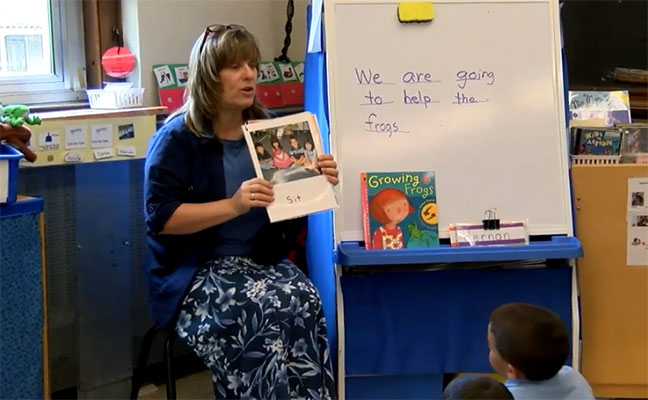Video Transcript for Abstract Counting
Dr. Sudha Swaminathan, Eastern Connecticut State University: Usually, children like to count things that they can see, that they can touch, objects that are right there in front of them.
Sudha Swaminathan: It’s important, initially, for toddlers to count what they can see and touch and feel, like their own fingers, their toys, pictures in their books.
Teacher: Cookies. How many? Let’s count them. One, two.
Sudha Swaminathan: We want to make sure that we include these objects in their environment.
Sudha Swaminathan: Gradually, as they get older they get more comfortable, and used to the idea that they can count things that they can hear, but not see, such as in music and movement.
Class: (jumping) 1, 2…
Sudha Swaminathan: Or when they are moving in the playground and they’re counting their jumps.
Child: (counting jumps) 10, 11, 12…
Sudha Swaminathan: And, gradually, they get even more abstract, when they start counting out members of their family who are not there.
Child: My sister’s number 1
Sudha Swaminathan: Even if children are ready to do abstract counting, we want to make sure that the environment has a lot of opportunities for counting objects and physical things that they can count.
@ 2016 Center for Early Childhood Education at Eastern Connecticut State University
May be reprinted for educational purposes.



